
Journal of Science and Transport Technology Vol. 3 No. 1, 12-25
Journal of Science and Transport Technology
Journal homepage: https://jstt.vn/index.php/en
JSTT 2023, 3 (1), 12-25
Published online 30/03/2023
Article info
Type of article:
Original research paper
DOI:
https://doi.org/10.58845/jstt.utt.2
023.en.3.1.12-25
*Corresponding author:
E-mail address:
vanmth@utt.edu.vn
Received: 02/02/2023
Revised: 18/03/2023
Accepted: 20/3/2023
Estimating the compressive strength of self-
compacting concrete with fiber using an
extreme gradient boosting model
Indra Prakash1, Thanh-Nhan Phan2, Hai-Van Thi Mai2,*
1DDG(R) Geological Survey of India, Gandhinagar, Gujarat 382010, India.
2University of Transport Technology, Hanoi 100000, Vietnam.
Abstract: Self-compacting concrete reinforced with fiber (SCCRF) is
extensively utilized in the construction and transportation industries due to its
numerous advantages, such as ease of building in challenging sites, noise
reduction, enhanced tensile strength, bending strength, and decreased
structural cracking. Traditional methods for assessing the compressive
strength of SCCRF are generally time-consuming and expensive,
necessitating the development of a model to forecast compressive strength.
This research aimed to predict the CS of SCCRF using the Extreme Gradient
Boosting (XGB) machine learning technique. The research uses the grid
search method to optimize the XGB model's hyperparameters. A database of
387 samples is collected in this work, which is also an enormous dataset
compared to those utilized in previous studies. An excellent result (R2 max =
0.97798 for the testing dataset) proves that the proposed XGB model has
excellent predictive power. Finally, Shapley Additive exPlanations (SHAP)
analysis is conducted to understand the effect of each input variable on the
predicted CS of SCCRF. The results show that the samples' age and cement
content are the most critical factors affecting the CS. As a result, the proposed
XGB model is a valuable tool for helping materials engineers have the right
orientation in the design of SCCRF components to achieve the required
compressive strength.
Keywords: Compressive strength (CS), Self-compacting concrete reinforced
with fiber (SCCRF), Extreme Gradient Boosting (XGB).
1. Introduction
Self-compacting concrete reinforced with
fiber (SCCRF) is a mixture of self-compacting
cement concrete and fibers (such as carbon, steel,
polypropylene (PP), polyester (PE), and glass) [1-
3]. These fibers are tiny, short, randomly dispersed
throughout the concrete, and make up around 1-3
percent of the overall volume. Depending on the
qualities of various fibers, SCCRF possesses a
variety of different outstanding advantages. Some
research [4-8] implies that steel-reinforced self-
compacting concrete will increase tensile and
flexural strength, and decrease structural
deformation. SCCRF using polymer fibers aids in
reducing breaking and cracking and is inexpensive
[9]. Moreover, SCCRF also has all the advantages
of conventional SCC, including the ability to self-
compact under its weight without needing a
compaction mechanism, making it well-suited for
projects with difficult construction sites. Due to the
benefits mentioned earlier, SCCRF is a commonly
utilized material in the construction and

JSTT 2023, 3 (1), 12-25
Mai et al
13
transportation industries, particularly in challenging
environments such as high-rise buildings, bridge
girders, and road pavements. To efficiently employ
SCCRF, it is vital to identify the material's
mechanical and physical properties, in which
compressive strength (CS) is an important
attribute.
Experimental methods are often utilized to
determine the CS of concrete and SCCRF in
particular. However, the downsides of these
approaches are the time-consuming casting of
samples, the need for intensive testing equipment,
and the results depending on the skill level of
technicians [10],[11]. Moreover, the CS of SCCRF
may be indirectly measured by the ultrasonic pulse
velocity index [12-14]. The link between
compressive strength and ultrasonic pulse velocity
is quite sensitive, making the estimation of CS
using this approach not particularly precise. Some
variables, including the type of fiber, the type of
cement, the ratio of water to cement, aggregate
content, concrete age, and fiber content, impact its
strength [12], [15]. Therefore, it is required to study
and build a numerical simulation tool to predict
SCCRF's CS quickly and cost-effectively.
In recent decades, machine learning (ML)
approaches utilizing available experimental data to
construct predictive models for material
characteristics have been widely adopted [16-19].
However, the number of research employing ML
models to predict the CS of SCCRF is limited [20],
[21], with only seven studies [12],[20-25]. These
investigations all utilize a relatively small quantity
of data, with the most significant data set including
189 data [24]. In addition, the vast majority of
research employs an artificial neural network
(ANN) approach [26-31], and Support Vector
Machine (SVM) [25]. While Extreme Gradient
Boosting (XGB) is a powerful model [32] that has
been applied to solve many complex problems, no
research uses the XGB model to predict CS of
SCCRF use. XGB is a supervised machine
learning algorithm with many advantages, such as
no need to normalize the database, can handle null
data values, high execution speed, and easily
handle big data sets. Due to the numerous
hyperparameters, however, the XGB model is
challenging to adjust. Overfitting can occur if the
hyperparameters are not chosen appropriately.
The goal of this paper is to create a robust,
high-precision model based on the XGB algorithm.
A dataset of 387 samples was gathered to develop
the XGB model. This is the biggest dataset of all
accessible ML research on CS of SCCRF,
according to the authors. In addition to the input
database, the prediction performance of the XGB
model depends on the model's selection of hyper-
parameters. This study focuses on optimizing the
hyperparameters of the XGB model by a grid
search to find an optimal XGB predictive model. In
addition, the effect of input parameters on the
SCCRF's CS is studied using Shapley Additive
exExplanations (SHAP) values technique.
2. The database utilized for research
The research used a large dataset, including
387 samples. All these data are collected from 11
international publications. [26],[30],[31],[33-40].
The database includes seventeen input
parameters (from A1 to A17) and one output (Y). The
names of the variables and their statistical analysis
data are described in Table 1.
The majority of variables in the dataset have
a wide distribution, including A1, A2, A3, A4, A5, A7,
A8, A9, A14, A15, A16, and A17. Specifically, A1 has a
minimum value of 220 kg/m3 and a maximum value
of 754 kg/m3. A2 is dispersed between 0 and
1311.9 kg/m3, and A3 is distributed between 0.83
and 1220 kg/m3. The range of values for A4 is
mostly between 137 and 239 (kg/m3), and the
range for A9 is between 0 and 288.9 kg/m3. Finally,
the output (Y) is mainly in the range of 30 to 95
MPa. Next, Fig. 1 illustrates the analysis results of
the correlation between inputs and outputs. The
level of correlation may be split based on the value
of the Pearson correlation index (rs). As observed,
based on the values of rs, the correlation between

JSTT 2023, 3 (1), 12-25
Mai et al
14
the input variables and the output is rather low.
Only several exceptional cases are determined,
with a few high correlations between pairs of input
variables, such as A8 (Steel fiber) with A2 (Coarse
aggregate) and A8 (Steel fiber) with A15
(Superplasticizer), respectively, rs = 0.88 and 0.84.
The interdependence between the input variables
is low. Thus, in this study, all input variables
contribute to the training and development of the
machine learning model.
Table 1. Statistical analysis of the input and output parameters
Name
Symbol
Unit
Mean
Std
Min
25%
50%
75%
Max
Cement
A1
kg/m3
416.633
99.98
220
363.5
405
440
754
Coarse aggregate
A2
kg/m3
725.978
203.36
0
722
772
800
1311.9
Fine aggregate
A3
kg/m3
909.838
129.25
0.83
826
932
955
1220
Water
A4
kg/m3
172.405
22.40
137.2
158
162
191.5
239
Fly ash
A5
kg/m3
40.413
86.46
0
0
0
0
306
Glass fiber
A6
kg/m3
0.632
1.74
0
0
0
0
7.95
Polypropylene fiber
A7
kg/m3
1.413
2.79
0
0
0
1.4
12
Steel fiber
A8
kg/m3
13.594
38.29
0
0
0
0
156
Limestone
A9
kg/m3
101.406
136.31
0
0
0
288.9
288.9
Basalt powder
A10
kg/m3
0.853
10.44
0
0
0
0
165
Marble powder
A11
kg/m3
0.853
10.44
0
0
0
0
165
Nano silica
A12
kg/m3
10.473
19.28
0
0
0
16.5
90
Nano CuO
A13
kg/m3
0.571
2.41
0
0
0
0
13.8
Metakaolin
A14
kg/m3
2.791
13.30
0
0
0
0
90
Superplasticizer
A15
kg/m3
8.785
6.92
0
4.5
7
9.18
33
Viscosity modifying
admixture
A16
l/m3
0.166
0.28
0
0
0
0.42
0.9
Age of samples
A17
day
36.566
28.83
1
28
28
28
90
Compressive
strength
Y
MPa
65.919
20.25
28.24
53.835
65.61
77.475
159.91
Std=Standard deviation
Fig. 1. Correlation matrix between variables.

JSTT 2023, 3 (1), 12-25
Mai et al
15
3. Methods
3.1. Extreme Gradient Boosting (XGB)
The XGB algorithm was developed from the
GBM algorithm and added by Chen, Tianqi, and
Tong He [41]. The advantage of XGB is its ability
to efficiently build boost trees that work in tandem
with each other. XGB is applied to both regression
and classification problems. The essence of this
algorithm is to optimize the value of the objective
function and do it based on the slope enhancement
framework. Thanks to parallel reinforcement trees,
XGB can solve complex problems quickly, flexibly,
and accurately.
3.2. Grid search for Hyperparameter
optimization
Machine learning models can be used in
different fields with different data sets. The
machine model's hyperparameters must be
adjusted to be suitable for different problems.
These values can influence model training, so
tuning the hyperparameters to improve the
prediction performance is essential. The essence
of this process is that the important
hyperparameters of the model are initialized and
optimized until the suggested objective function
reaches the minimum or maximum values [42].
Some commonly used hyperparameter
optimization methods include grid search, random
search, sequential hyperparameter optimization,
etc. The hyperparameters of the XGB model are
optimized in this study using the grid search
approach.
The predictive performance of the XGB
model is dependent on many hyperparameters, of
which a group of important hyperparameters is
chosen for optimization. The value of the important
hyperparameters is changed in a certain range
called meshes, the remaining hyperparameters of
the model take the default value. This approach
exhaustively investigates all parameter
combinations by looking for meshes in the
multidimensional domain iteratively across the
whole sample size. To identify which combination
yields the highest accuracy, all combinations are
evaluated. The evaluation, in this study, is based
on the coefficient of determination (R2) and
standard deviation (Std) criteria. These values are
calculated by averaging the results of 5 cross-
validations (CV) to evaluate the trained model.
3.3. Evaluate the model's predictive
performance
The predictive capability of the machine
learning model was assessed using four statistical
metrics (R2, MAE, RMSE, and MAPE). Where R2 is
the coefficient of determination, RMSE stands for
root Means square error, MAE stands for Mean
absolute error, and MAPE stands for Mean
absolute percentage error. The more accurate the
model, the higher R2, the lower the MAE, RMSE,
and MAPE, and vice versa. R2 value ranges from 0
to 1. The model is ideal when R2 = 1. Following is
how these four indicators are determined:
MAE= 1
n∑|qi -q,
i|
n
i=1
(1)
RMSE=√1
n∑(q -q,i)2
n
i=1
(2)
R2 =1-∑(qi -q,
i)2
n
i=1
∑(qi -q
)2
n
i=1
(3)
MAPE= 1
n∑|qi-q,
i
qi|
n
i=1
×100%
(4)
where n infers the number of samples, qi and q,
i
are the actual and predicted outputs, respectively,
and
q
is the average value of the qi
3.4. Shapley Additive exExplanations
SHAP is a frequently employed approach in
the field of machine learning for interpreting the
model's predictions and determining the effect of
input parameters on output parameters. Shapley
created Shap value from a game theory
perspective [43]. Where the dataset's feature
values act as coalition members. This technique
predicts how each attribute contributes to the
projected value and explains the forecast. SHAP

JSTT 2023, 3 (1), 12-25
Mai et al
16
values are the numerical values allocated to each
player in every possible player combination. It
assigns a value to each predictor for the regression
issue based on all potential predictive models. This
technique enables the SHAP value to produce a
prediction result that is more similar to the real
model. It should be noted that SHAP analysis is
only one of the approaches to understanding the
impact of input features on a model's output. It is a
model-agnostic method with a solid theoretical
foundation that provides local and global
explanations.
4. Methodology flowchart
The best XGB model for predicting CS of
SCCRF is developed by the following four steps:
(1) Data collection, (2) Training model and
optimizing the model's hyperparameters, (3)
Testing model, (4) Evaluating the effect of input
parameters. The detailed step-by-step is as
follows:
Step 1: Data collection
The database includes 387 experimental
results, collected from 11 documents. The
database is randomly divided into two sets: the
training dataset for model training (accounting for
70%) and the test dataset for model testing
(accounting for 30%).
The dataset consists of 387 samples divided
into 2 sets. The training dataset has 271 samples
and the test dataset has 116 samples. The random
separation of the dataset into two distinct parts
enables the most objective and precise evaluation
of the prediction ability of the machine learning
model because the testing dataset is completely
unknown to the ML model during the training part.
In addition, all data values are standardized to a
range of 0 to 1 during model construction to reduce
simulation-generated errors.
Step 2: Training model
In this step, the XGB algorithm is trained
using the training dataset. Using grid search, the
hyperparameters of the XGB model are tuned.
After refining the parameters, the predictive
performance of the models is assessed and
compared in order to select the XGB model with
the most significant predictive performance. In
order to avoid overfitting and enhance the
prediction ability of the machine learning model,
the 5-fold cross-validation approach is
implemented during model construction. This step
is repeated until the models are successfully
trained (the tolerance criterion is met).
Step 3: Testing model
After step 2, the aforementioned optimal
XGB models are evaluated with the test dataset.
Four statistical metrics were used to evaluate the
prediction accuracy of the model. The significance
of these statistics is presented in section 3.3.
Based on the acquired evaluation index values, the
XGB_1 model is chosen as the best model. In the
following stage, this model is used to predict the
CS of SCCRF and analyze the effect of input
parameters on CS.
Step 4: Evaluating the effect of input
parameters
The recommended XGB model is used in the
last step to assess the impact of input parameters
on the CS of SCCRF using the Shap value method.
The detailed methodological chat of the study is
presented in Fig. 2.
Fig. 2. Methodology flowchart



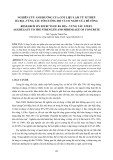
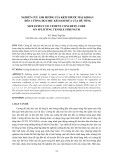
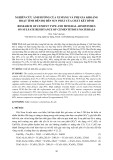
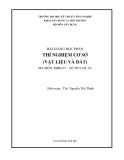



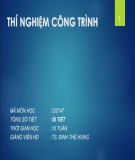
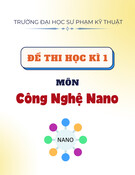
![Bài giảng Quản lý vận hành và bảo trì công trình xây dựng [chuẩn nhất]](https://cdn.tailieu.vn/images/document/thumbnail/2025/20251006/agonars97/135x160/30881759736164.jpg)
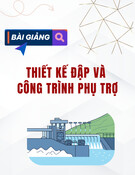

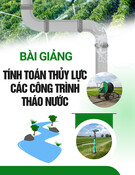
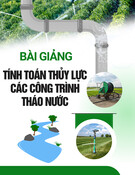
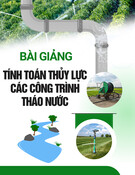
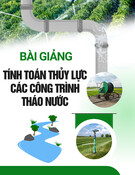
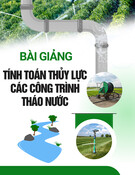
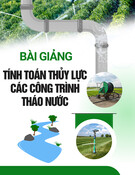

![Ngân hàng câu hỏi trắc nghiệm Sức bền vật liệu 1: [Mô tả/Định tính Thêm để Tăng CTR]](https://cdn.tailieu.vn/images/document/thumbnail/2025/20250920/kimphuong1001/135x160/6851758357416.jpg)


![Trắc nghiệm Kinh tế xây dựng [chuẩn nhất]](https://cdn.tailieu.vn/images/document/thumbnail/2025/20250920/kimphuong1001/135x160/32781758338877.jpg)
